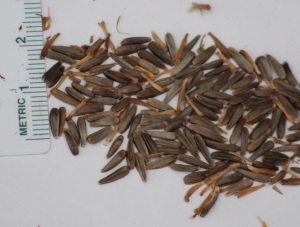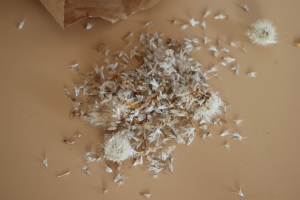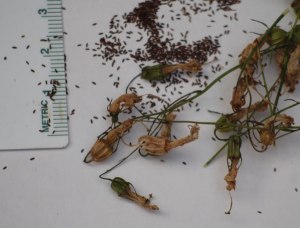 Fall is the best time to put established plants (ie in pots) into the ground. Hands down, no contest.
Fall is the best time to put established plants (ie in pots) into the ground. Hands down, no contest.
Plants will need to be watered for a few weeks to help roots make connections with the soil around them and in fall we typically get rains that help moisten the soil sufficiently to allow roots to establish in the soil before winter freezing which prepares plants for rapid growth in the spring.
Fall is also the best time for planting seed of many species of native plants. This mimics what happens in the wild where seeds naturally fall from plants onto the ground during the heat of summer. If not eaten by insects, birds or small mammals and if they land a site that can maintain moisture, they will germinate. Some seeds germinate in early fall and remain green underneath the protective blanket of snow. Others need to undergo periods of cold, moist stratification and respond to changes in light and temperature before they will sprout in the spring.
Some native species prefer spring sowing, especially asters, grasses and some dry land species. These species typically require warm temperatures as well as moisture for germination. Many of these species are found on the open plains.
Montana species best for springtime planting:
- Aster spp. (Aster species)
- Fleabane spp. (Erigeron species)
- Blanket Flower (Gaillardia aristata)
- Dotted Blazing Star (Liatris punctata)
- Blue Flax (Linum lewisii)
- Black-eyed Susan (Rudbeckia hirta)
- most grass species
Montana species best seeded in the fall:
- Pussytoes (Antennaria species)
- Columbine (Aquilegia species)
- Arrowleaf Balsamroot (Balsamhoriza sagittata)
- Harebell (Campanula rotundifolia)
- Sticky Geranium (Geranium viscosissimum)
- Prairie Smoke (Geum triflorum)
- Scarlet Gilia (Ipomopsis aggretata)
Whether planting in spring or fall, seeds may be sown either directly onto a site or into containers for planting out after seeds have germinated.
Each method has its advantages:
- only have to plant once
- less materials (no seed starter or pots to use)
- cheaper (in terms of resources and time)
Sowing in containers:
- easier to monitor and control moisture levels as seeds germinate
- greater success rates
- less predation (by birds and animals)
Whichever method you use, the critical time for all seeds is when they begin to germinate. Seeds must be kept moist until they establish their roots into the soil, usually this takes about 2-3 weeks. If they dry out even once they will die.
If you are looking for seeds of native species:
- collect your own and store them in paper envelopes
- buy from reputable companies like Native Ideals Seed Farm in Arlee, MT that specialize in native species
- share seeds with friends that you know gather seeds in an ethical manner



